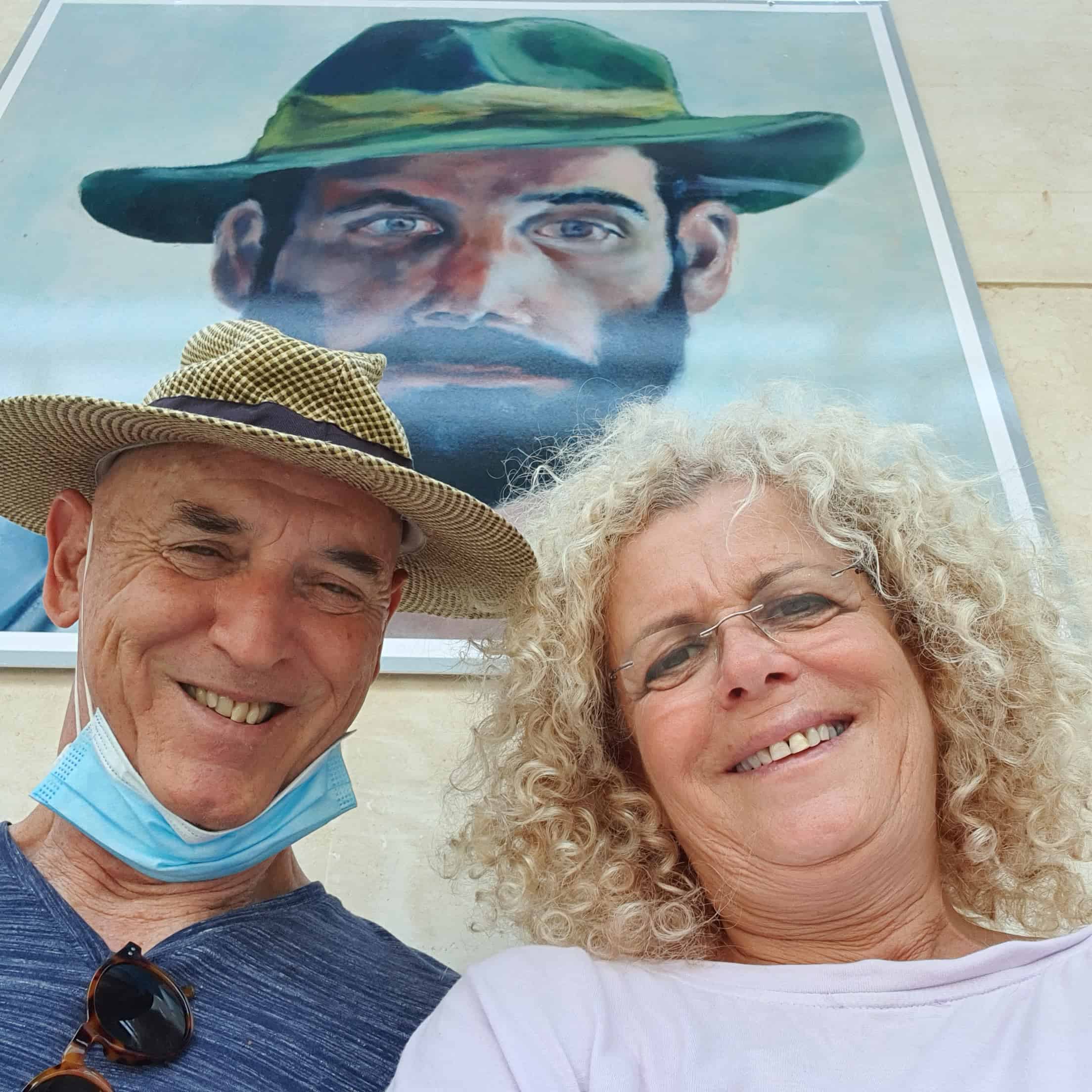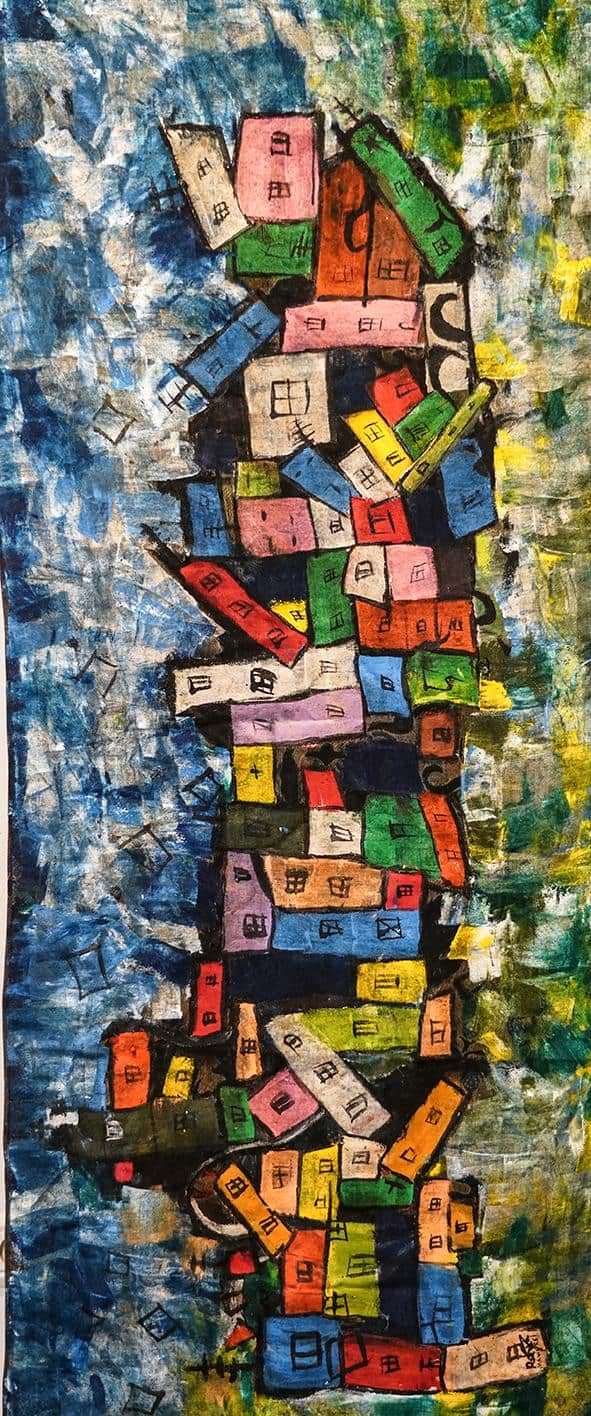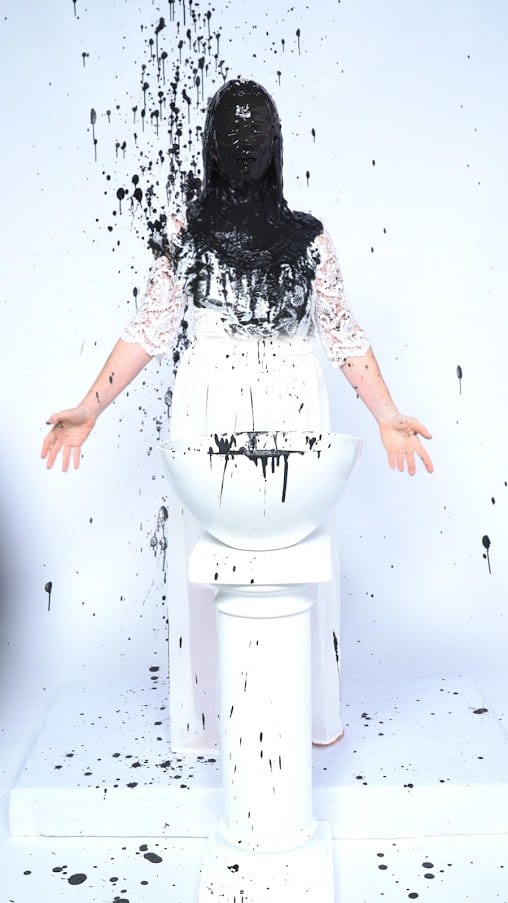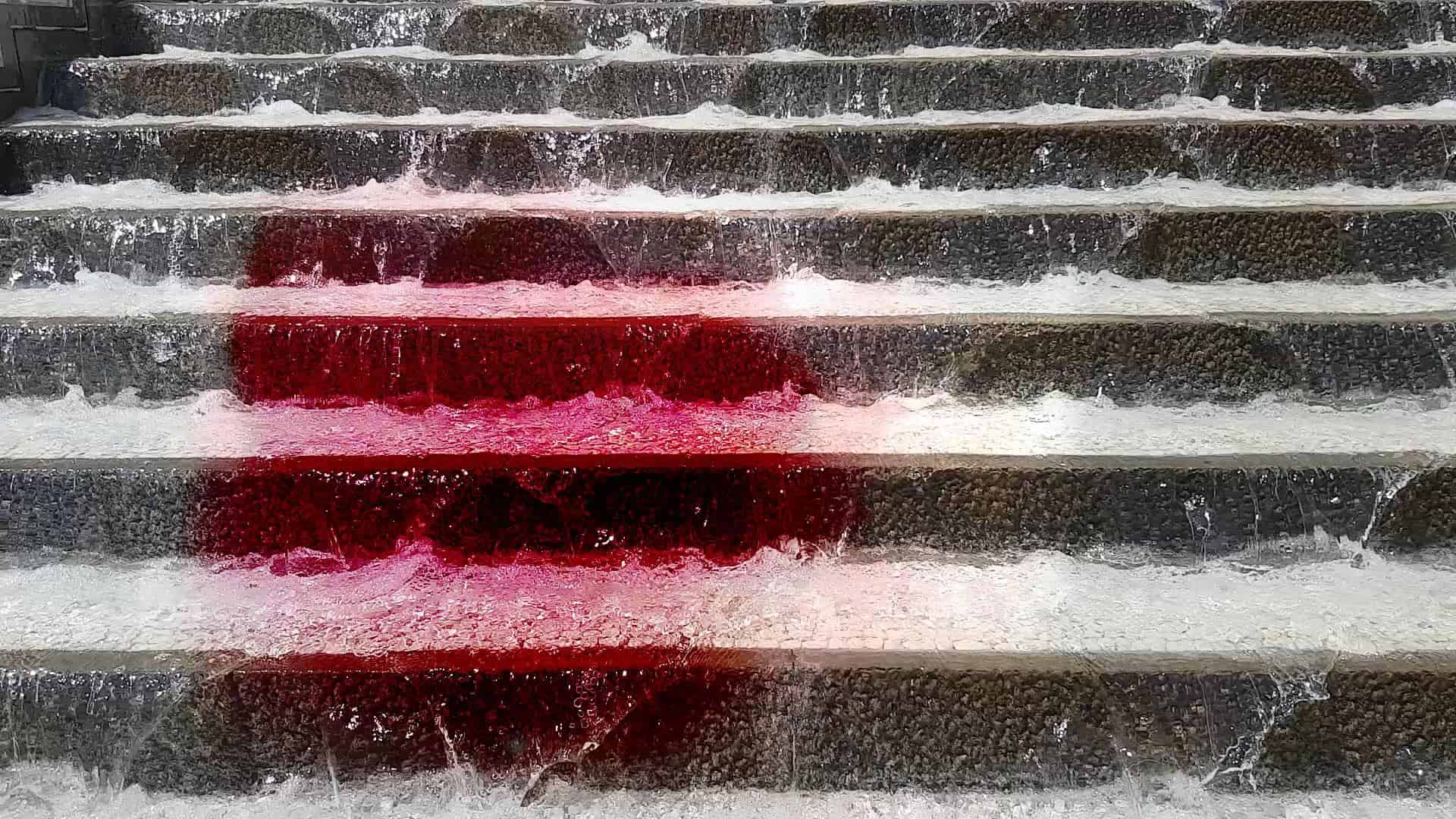In “Beyond the Veil”, 100 women from five continents present individual works organised around the theme of veiling which becomes an opportunity to reflect on society and culture. Visual artists, authors, poets and social activists have contributed to this project, which has been shown at the Venice Biennale in addition to Luanda, Paris and Katowice. A special edition curated by Iris Elhanani and Doron Polak (co-curation Sławomir Brzozka) is currently being shown online as part of Poznań Art Week in Poland. It can be found here.

Iris Elhanani and Doron Polak
Dobrosława Nowak: In this exhibition, 22 women remain out of the original 100 participants. What lay behind this curatorial decision and why did you choose these artists?
Iris Elhanani & Doron Polak: Due to Covid-19 and the limited space in Poznań, we decided to show artists from Poland together with a few works from the original exhibition. For the Polish artists, it was the first time their works had been shown with this project as they joined after our exhibition at the Katowice Academy of Art. We invited Sławomir Brzozka to curate this section; he selected a few artists from the original exhibition. I believe that if Covid-19 were not around we would have presented it in full. Unfortunately, this was impossible, so we decided to make an online exhibition presenting the new artists from Poland. In our next exhibition in Israel or elsewhere these artists will rejoin the rest of the project.
DN: Iris, you were inspired to create a project expressing women’s vision “as a result of a conversation with young women leaders from the Arab world who met in Jordan during the YaLa Organization’s conference for young Middle Eastern journalists.” You launched this one after a meeting with Doron, Israeli representative for the Artists’ Museum. Do you have any personal experience of women’s oppression?
IE: As an independent woman in Israel, I was never oppressed, but I find even in 2020 most of the world is dominated by men and religion. I come from a Western society, nevertheless I find women all over the world must struggle and fight for their rights, freedom of speech, education, etc. and these rights are in most cases still decided by men or religious “leaders”. There is still a long way to go.

Randa Majadla, Mawasi
Palestnian 48
DN: There are a hundred personal, intimate and important voices in your project. I suppose there are millions of others. Do you wish to add more women?
IE: I would like to invite more artists to express a vision of their life in a particular culture. I believe this message should expand around the world to include many voices in various media. I can give you the example of another project I did in 2000, “Milestones for Peace”. It was produced in partnership with Ryszard Waśko and the Artists’ Museum in Lodz. The idea was for an exhibition to present stones from Jerusalem and thereby transform these objects “from the heart of the conflict” into emissaries for peace. We had 500 artists take part and many world leader signed the stones in support of the idea.
DP: We showed this project for 7 years around the world and in each place we invited local artists to contribute. The idea spread throughout the communities; in Germany, we had 400 art classes create their own “Milestones for Peace”. From my point of view, “Beyond the Veil” should be an ongoing project that will inspire and serve women to Lift the Veil and raise their voices equally.
DN: I guess your answer to the next question would have been different before the 22nd of October, when the ongoing Women’s Strike began in Poland. People here are angry, tired of the oppressive political system. What is your approach to showing this project in Poland? Does the cultural discourse reflect the roots of your idea?
IE: Of course! I see it happening all over the world. Finally, the energy is moving from the government to the People. I think the process may take time but we can see that people are not afraid to step out and express their thoughts and feelings. I believe it’s the beginning of a change, that in future Power is going to be handled by the people who will be served by governments instead of being controlled. Covid-19 lifted the veil, it opened the minds of the people to see that the old system no longer works. People must take responsibility for their rights and way of living. In relation to what is happening in Poland, our exhibition expresses the idea that the people are free to choose and that leaders and governments must follow and serve the people.

Orit Bertini, Shavit White 2, still from video, 2019
DN: “White” is a video by the artist Orit Bertini Shavit who takes part in “Beyond the Veil”. As she explains:
“At the center of the exhibition is the figure of a young girl whom I named <good girl>. The image is based on an old slide I had found in the street, a photograph of a smiling girl dressed in what appears to be school uniform: a buttoned-down white blouse, blue skirt, knee-high socks, and black doll shoes. In my work, I am appropriating the identity of the photographed girl, bringing it to life, and putting together an arena where a battle is taking place between the disciplined and the natural. Deconstructing and reconstructing the original image via different photography, video, and performance practices. These are necessary in order to break through a frozen, cocoon-like condition, go through a metamorphosis and fly. No more <Good Girl>!”
An artist dressed in a neat white dress puts her head in a bowl of black liquid. When she takes it out she seems to be wearing a hijab. That’s an interesting plot twist! You write that “[t]he covering of the body – despite it representing a patriarchal demand for a woman’s modesty, on the one hand, is a cultural sign of individual female identity on the other.” Your view of the subject isn’t one-sided?
IE & DP: We have respect for any woman who chooses to cover herself based on her culture. Our idea here was to enable women to express their identity irrespective of “social laws”.
DN: You have managed to find this one piece of clothing, the one with the incredible amount of hidden meanings. It takes so many various forms. What is special about veils/scarves from your point of view?
IE & DP: The veil/scarf is used as a metaphor to enable women to follow their hearts and express themselves as they choose; and yes, you are right, it can take many forms. We wanted “Beyond the Veil” to be a traveling exhibition that would be easy to handle without expensive shipping or installations. This gave us the opportunity to reach out to many places on a low budget.

We Are Lost Triptych, hires hi res, Ewelina Koszykowsky
DN: You say that “the project goal is to support women to LIFT THE VEIL and express their voices with freedom, liberation, and mutual respect for all cultural identities.” Exhibitions were planned for the period 2019-2022 and you’re now in the middle of this. Do you feel you made it? Would you like to continue exploring this subject or are there plans for other projects?
DP: Well, this idea can be expanded along many roads, yet we have just started. Due to our new reality, we are searching for ways to expose this project to various communities and we are inviting curators and artists to be part of the initiative in any form they wish.
DN: Sławomir Brzoska, co-curator of the project’s online edition for Poznań Art Week 2020, adds: “Visual hypertext discovers new interpretations that cannot be limited, that are free just as human thought is free. The physical material of a veil turns into a veil of isolation and loneliness, it takes the form of a protective mask, behind which both sexes hide. The real fabric turned into a digital image displayed in the digital world of virtual reality and artificial intelligence.” What do you think about these correlating ideas: veils/scarves and an online exhibition?
IE & DP: The digital and online world is an opportunity to reach out to the many people that cannot attend physical space. Yet I think at the moment most art being shown in online galleries is still shown as in a gallery space but missing the sensual experience of space and materials. I believe there is a huge need for art to be shown; our current limitations will lead to the development of media that offers viewers a better experience of online exhibitions.

Orit Akta Hildeshem, “Confined “, (self Portrait with orginal yemanite cloth), 2018- 2019
DN: To suggest another parallel, this time between veils and face masks: do you think masks make us feel oppressed with an intensity that is independent of sex and race?
IE & DP: In the East (Japan, Korea etc.) people wore face masks before the pandemic and it didn’t impact them. I think the human being adapts to change very easily and this will become part of our life until the pandemic is over. You see how many designed masks there are, maybe instead of lipstick . . .
DN: Do you think the experience of pandemic will lead societies to general equality in the long run?
IE: No. I think our diversities will always be there and this is what makes societies grow and develop. What I think will happen is that people will learn to share and collaborate and see the other as equal, because this pandemic expresses the equality of human beings. It “hits” the rich, the poor, the old and the young without borders and limitations. Understanding that we need each other to survive will open people’s hearts and minds. Eventually, it will turn the world into a more connected one, and a better place hopefully.
For more information on “Beyond the Veil”, visit their website where you can also view the individual works.
Rivka levi, “Woman Child”, Israel
Mashuko Kasoe, Kenya, Massai Mara

Ruxandra Flavia Munteanu, “Born of the earth”













